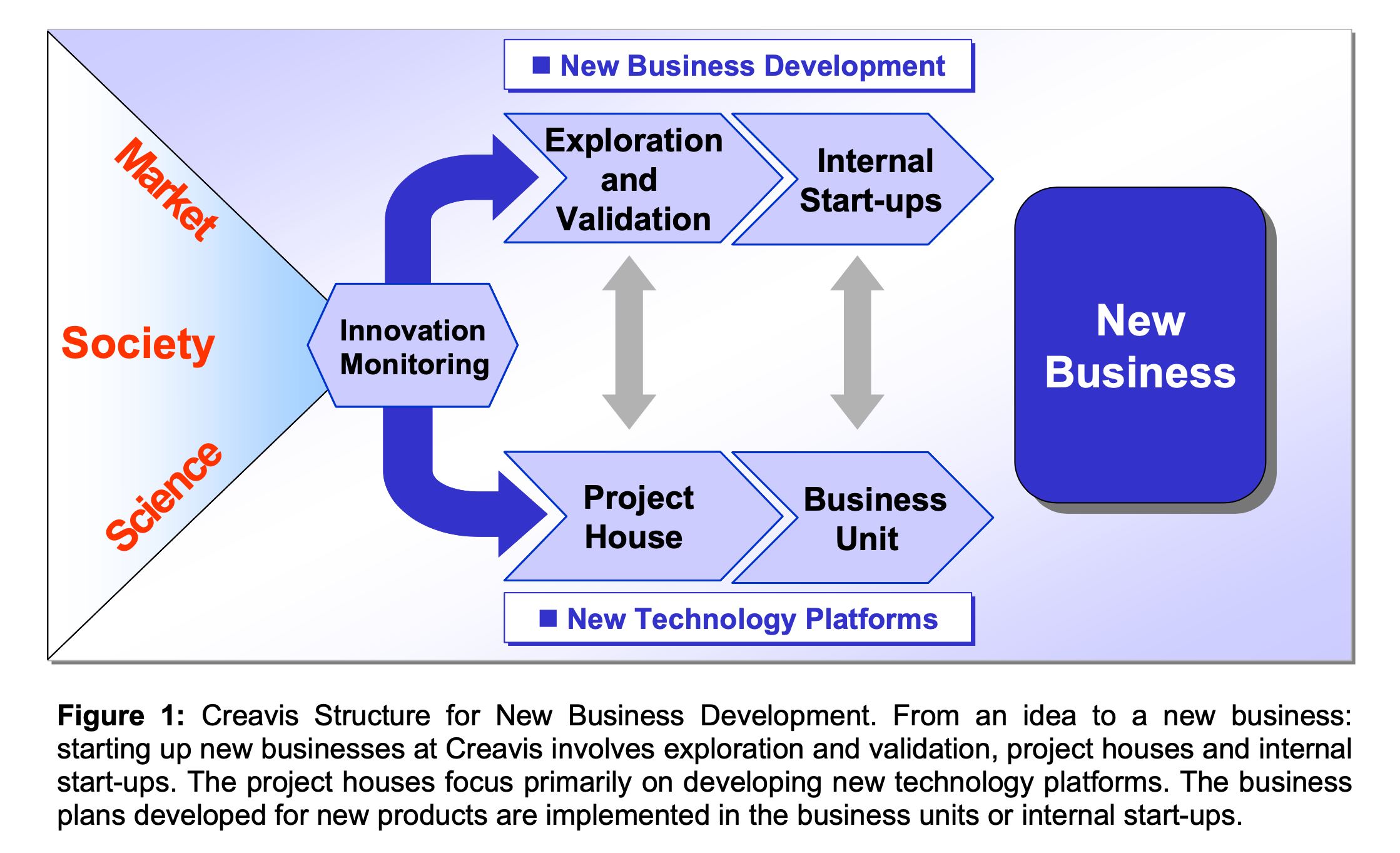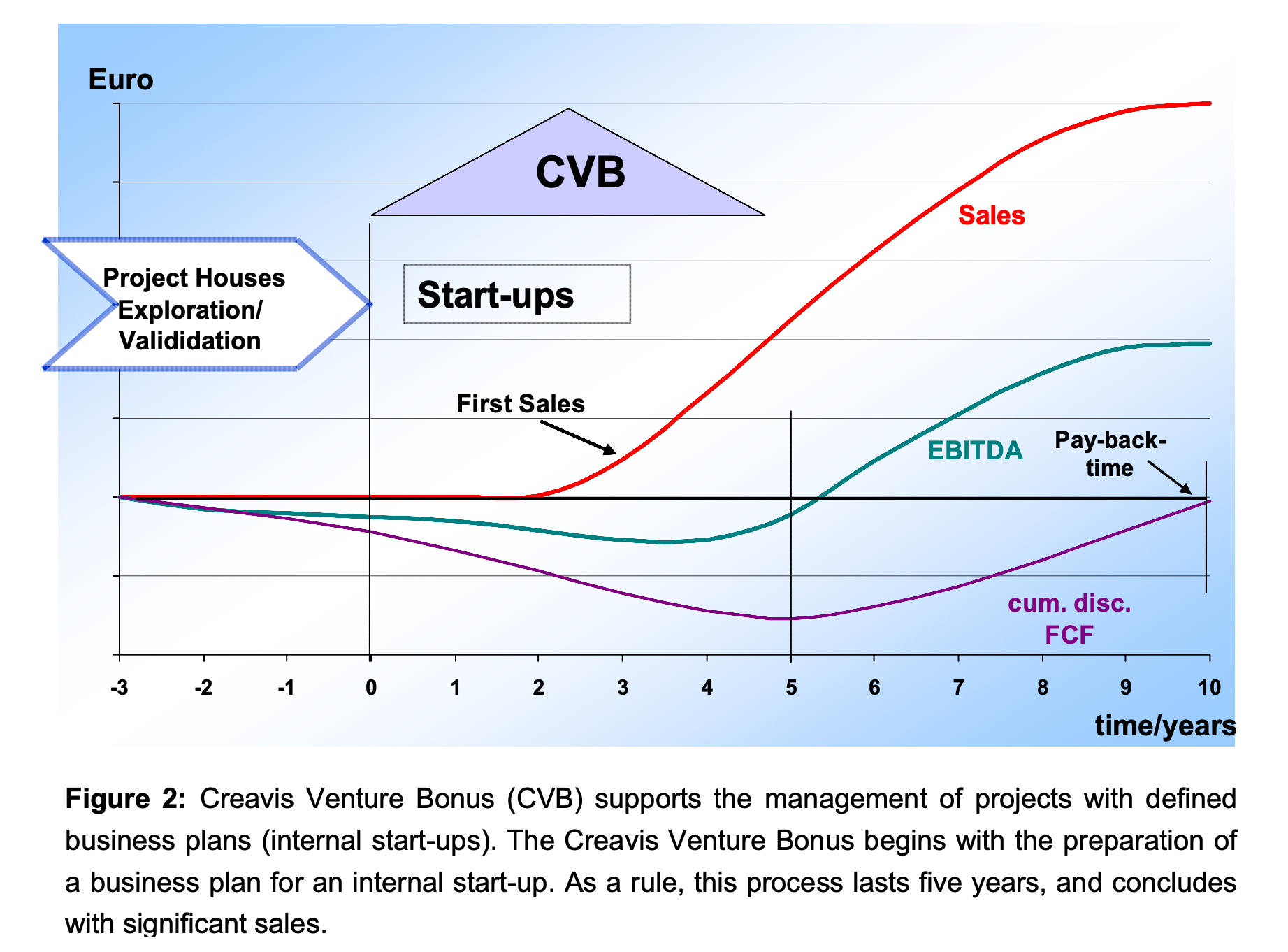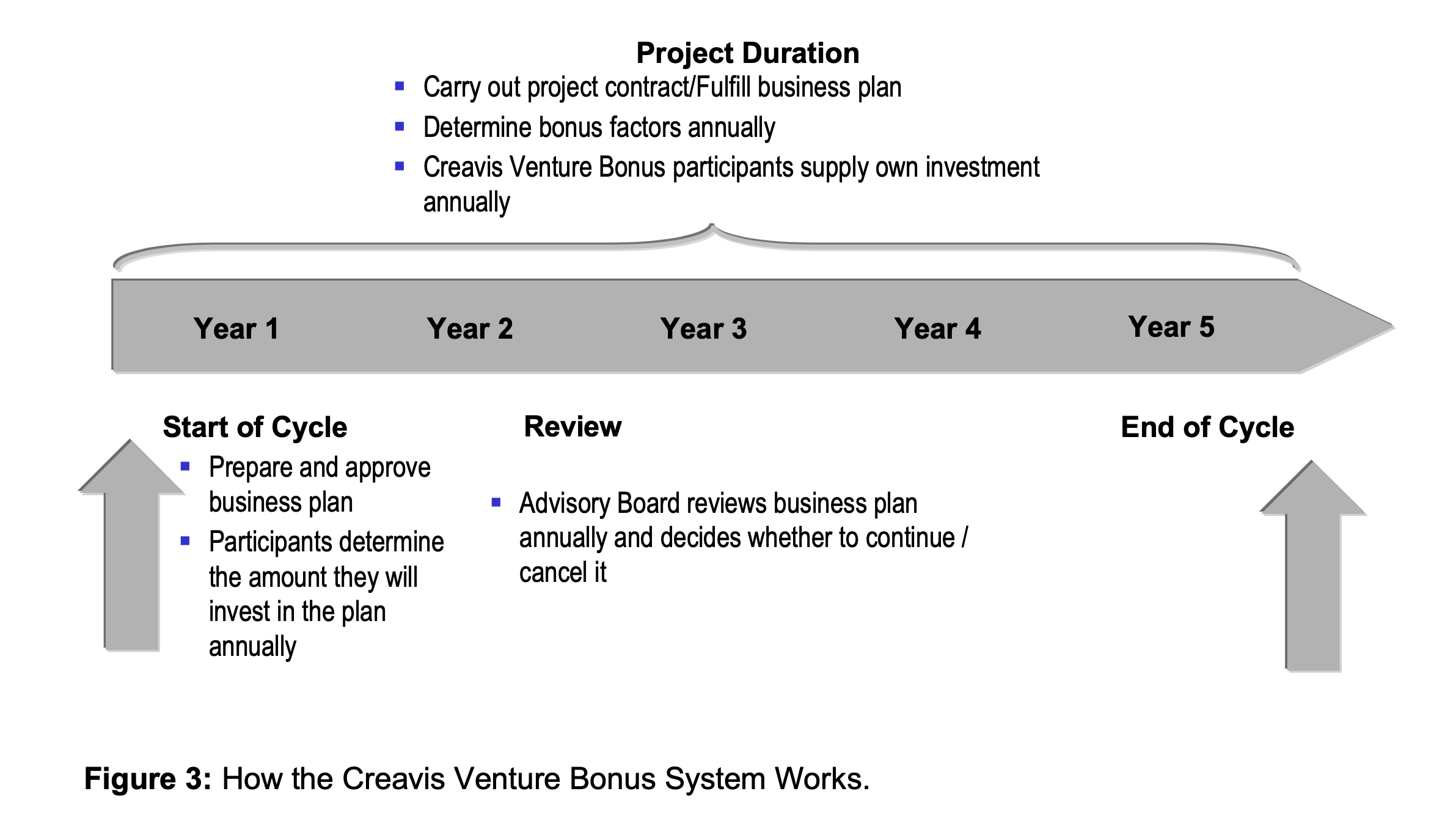Accelerating the Processes of Innovation: Degussa’s New Bonus System Creates Innovation Incentives for Creavis Employees
To fully exploit the economic potential of new developments, to create innovation incentives for employees in research and development, and to encourage entrepreneurial thought and action — these were Degussa’s goals in launching its new remuneration tool, the Creavis Venture Bonus.

Since January 2004, the approximately 70 Creavis exempt employees have been able to invest part of their performance-related remuneration in internal start-ups, through which Creavis is building new businesses for the Group.
Essentially, a portion of the variable annual compensation will be converted into a five-year long-term bonus, with the opportunity to multiply it and to risk losing it. The interest earned by the employees’ capital will be based on the market success of the projects. If the value of a project falls significantly short of expectations, the bonus invested in that project will be lost. If the project succeeds, the distribution can be several times the amount of the investment. Response has been extremely positive: more than three quarters of eligible employees are taking part in the new bonus system, which was launched as a pilot with four start-ups.
This remuneration tool is a way for Degussa to recognize the unique role Creavis plays. Established in 1998, Creavis was set up to enter into new technologies via project houses and built up new businesses in emerging markets. Creavis uses internal start-ups to launch new products and open up new markets with above-average growth rates on behalf of the Corporation. Currently, it has four active start-ups: Degussa Advanced Nanomaterials, Degussa Homogeneous Catalysts, CREASORB® (water-absorbing products for technical applications), as well as Membranes (ceramic separators for lithium-ion batteries).

Creating stronger links between the interests of the company and the employees
As Degussa has given Creavis the objective to explore new territory, most of its activities and research projects carry high financial risk. But they also carry great entrepreneurial opportunities. The Venture Bonus System is a reflection of this very idea. It offers employees the chance to profit from these opportunities, if they are also willing to accept the risk. The advantage is that, as employees have detailed information on the projects, they are particularly well-equipped to determine and implement what will make the projects successful. In this way, the system closely links the interests of the company with those of the employees, and places the economic success of the start-up front and center.
Participation in the venture bonus is also a valuable tool for measuring how the employees themselves view the start-ups’ chances for success. At the same time, it also promotes entrepreneurial thinking and a consistent alignment of all activities to the objectives. So it is not only an incentive for innovation, but it is also a management element in Degussa’s innovation process — an element that motivates employees to exploit the economic potential of the start-up while at the same time indicating the project’s prospects for success, compared to other projects as well as over the course of time.

Detailed business plans provide the foundation for employees’ decisions
To provide the basis for the Creavis Venture Bonus, project-specific business plans with defined parameters were prepared for each of the four internal start-ups. The business plans define how relevant economic key figures such as sales, EBITDA, and investments are expected to develop over a period of five years—or the “performance period.” Limits for performance, below which the invested bonus is lost, are also defined. In comparison to the risk, the chance of profiting from achieving and/or exceeding the plan is disproportionately large.
The business plans for the start-ups were presented to employees as part of a road show at the end of 2003. Based on this information, employees were able to decide the amount they want to invest every year in thepresented start-ups over the performance period. So as to limit the risk for employees, Degussa set an income-based upper limit that employees could not exceed. Payments from the Venture Bonus System will be made at the end of the performance period in 2008. An annual account statement keeps employees informed about the performance of the capital they have invested. Employees can also decide from year to year whether they want to continue to invest in “their” start-ups. Once they pull their capital out of a current project, however, they are not permitted to reinvest at a later date.
The Venture Bonus System puts Creavis at the forefront in the creation of innovation incentives. Set up as a pilot, the system will have to demonstrate in the next few years whether its current form meets everyone’s expectations— those of the employees, who hope for higher bonus payments, as well as those of the company, which views it as a tool for improving its own innovation process and business performance. Decisions regarding the viability and performance of the current system and broader implementation of the concept will be considered no later than five years from now.
At a Glance: Creavis Start-Ups
Degussa invests about 10 percent of its research budget—€347 million in 2003—in Creavis, whose responsibilities include building up new businesses. Currently, Creavis also maintains four internal start-ups.
Creavis operates the start-up Degussa Advanced Nanomaterials together with the Aerosil & Silanes Business Unit. In December 2003, it began commercial production of its first product—nanoscale zinc oxide, which will initially be used as a UV protector in sunscreen. Degussa also anticipates rising demand for zinc oxide as a UV protector in such applications as paints. The start-up will soon bring other products to the market: nanoscale ceroxide and indium tin oxide for the electronics, optics and coatings industry.
Creasorb markets specialized superabsorbents for various technical applications: CABLOC® prevents water from penetrating cables, FIRESORB® is an extinguishing additive for all Class A fires, FAVOR PAC® absorbs and retains unwanted liquids during transport and storage of foodstuffs, and STOCKOSORB® stores water and nutrients in the soil to increase their availability for plants. As Creavis’ “oldest” start-up, Creasorb is already generating turnaround, posting positive results in fiscal 2003, and increasing product sales by 21 percent. Creasorb is the market leader for technical polymers in technical applications.
Membranes: In the future, the power density per battery volume in lithium-ion batteries for mobile phones, camcorders, computers and recently, for mobile applications through to the automobile, will increase considerably. At the same time, this will increase the demands on battery safety. According to initial reports from battery manufacturers in Europe and Asia, the new ceramic separators developed by Degussa contribute to greater battery safety. Market interest, especially in China, is already so great that Creavis’ pilot plant is running at high speed. There are plans to expand production in 2005.
Since January 2004, Degussa Homogeneous Catalysts has produced and marketed the homogeneous catalyst systems developed in the Catalysis Project House, and offers services for the rapid detection of homogeneous catalysts. The products and services significantly improve access to medicinal agents, which makes them particularly attractive for the pharmaceuticals industry.